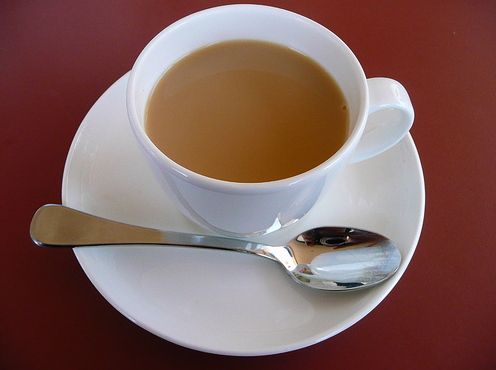After much begging and pleading, Kellie has agreed to let me help her from time to time with posting things, especially to the Garden Section. This is where I have some information to add that might actually be useful. All the rest is my amazing wife Kellie. She is an incredible women! NOTE: I did not have to say that to get on here…but it helps!
My post for today is Worm Tea. Now, before you get start getting out the finger sandwiches and the cookies, th is ain’t the kind of tea you are going to have the Ladies Bible Study over for. Well, ya could, but they won’t come back! “Worm tea” is made from worm castings which have been soaked in water, molasses and oxygenated. The extra oxygen causes a bloom of the good bacteria, plus the added benefit of nitrogen, phosphate, calcium, magnesium and potash.
is ain’t the kind of tea you are going to have the Ladies Bible Study over for. Well, ya could, but they won’t come back! “Worm tea” is made from worm castings which have been soaked in water, molasses and oxygenated. The extra oxygen causes a bloom of the good bacteria, plus the added benefit of nitrogen, phosphate, calcium, magnesium and potash.
Before I show you HOW to easily make it yourself, let me tell you WHY you should consider making it. (if you already trust me and just want to make it, skip to the video at the end of this post)
Worm Tea Advantages
1. Worm Tea will out perform chemical fertilizer, increasing both plant size and yield. This is due to interaction of Worm Tea microbes with the soil microbes and protozoa, soil particles and the roots of the plant itself.
2. Worm Tea can be used as an insecticide and a fungicide; plants become an unsavory environment for problem insects and pathogens – they cannot get a foothold.
3. The bacteria and additional live microbes will eat fungus such as: Black mold on fruit trees, black spot on roses, scale on crape myrtles etc., as well as kill the larvae of white flies, aphids, spider mites etc.
4. Worm castings tea has also helped with plants already in difficulty.
5. Worm Tea, used as an inoculant for potting soil, will suppress airborne pathogenic fungi that can readily infect sterile potting medium. The organisms in Worm Tea also produce hormones, vitamins, nutrients, enzymes, amino acids and minerals needed by seedling cuttings and young plants. Inoculation should be done two weeks prior to planting.
6. Plants grown in soil treated with Worm Tea are healthier due to the symbiotic relationship between the plant and the microbes in the root zone. Plants feed the microbes and the microbes produce or make available all of the food and medicine the plant needs to thrive.
7. Plants grown in soil treated with Worm Tea are more nutritious than plants grown in soil treated with chemical fertilizer. The food value of these plants is increased due to the availability of minerals, vitamins, enzymes and amino acids.
8. Worm Tea can remediate soil that has been damaged by agricultural chemicals. With repeated application the microbes will adapt to the soil, convert and metabolize organic and inorganic chemicals. They will also sequester heavy metals not required by plants.
9. Worm Tea can treat lawns affected with thatch, which is a condition caused by sterility in the underlying soil. Chemicals usually cause sterility. Worm Tea will repopulate the soil with microbes, enrich the roots and break down the thatch, turning it into food for the grass.
10.Tea applied to the soil improves Earth’s water retention. Many of the microbes manufacture protective mucus that acts as glue to agglomerate soil particles. Microbial colonies also make a bio-slime that is mostly water and is retained to protect the colony. The water retentive property of healthy soil can be 3-4 times greater than unhealthy soil.
11.The microbes in Worm Tea turn organic matter into humus, storing energy for later use. This is the basic unit of soil fertility.
12.The microbes in Worm Tea feed other organisms in the soil food chain. Protozoa and nematodes feed on bacteria and fungi directly while worms ingest bacteria laden soil particles. All life in the soil depends on microbes, directly or indirectly.
13.Worm Tea applied as a foliar spray will act as a fertilizer. Plants will produce more foliage and larger stems. This is a good treatment for plants that are stressed or lacking enough sun.
14.Worm Tea applied to a compost pile will accelerate the breakdown of plant material, reducing the amount of time to make compost. It can also be used to re-inoculate the pile after it has gone through its hot phase, which inactivates or kills many of the beneficial microbes. Re-inoculation increases the population of beneficial microbes, which continue to breakdown organic matter and form humus.
________________________________________________________
OK, now you know WHY, lets jump into HOW. If you hop online and Google Worm Tea, your screen will fill up with many recipes. I encourage you to try a few, as I will. In the following video, I will show you the simple set up and recipe I am using right now. Start here and add as you move forward!
IMPORTANT NOTE: All tea made must be used within 24 hours or the microbs will begin to die in the bucket. You cant save this stuff. It’s alive! Use it up! Get it all on your plants. Once your set up, you can easily make more anytime!
That’s it for now kids! I do have a video I shot of our start-up worm composter where we will get “our own” worm castings. I will post that in a few days for those who might be interested in starting their own!
PEACE OUT AND… DON”T DRINK THE TEA!
Tracy D.
